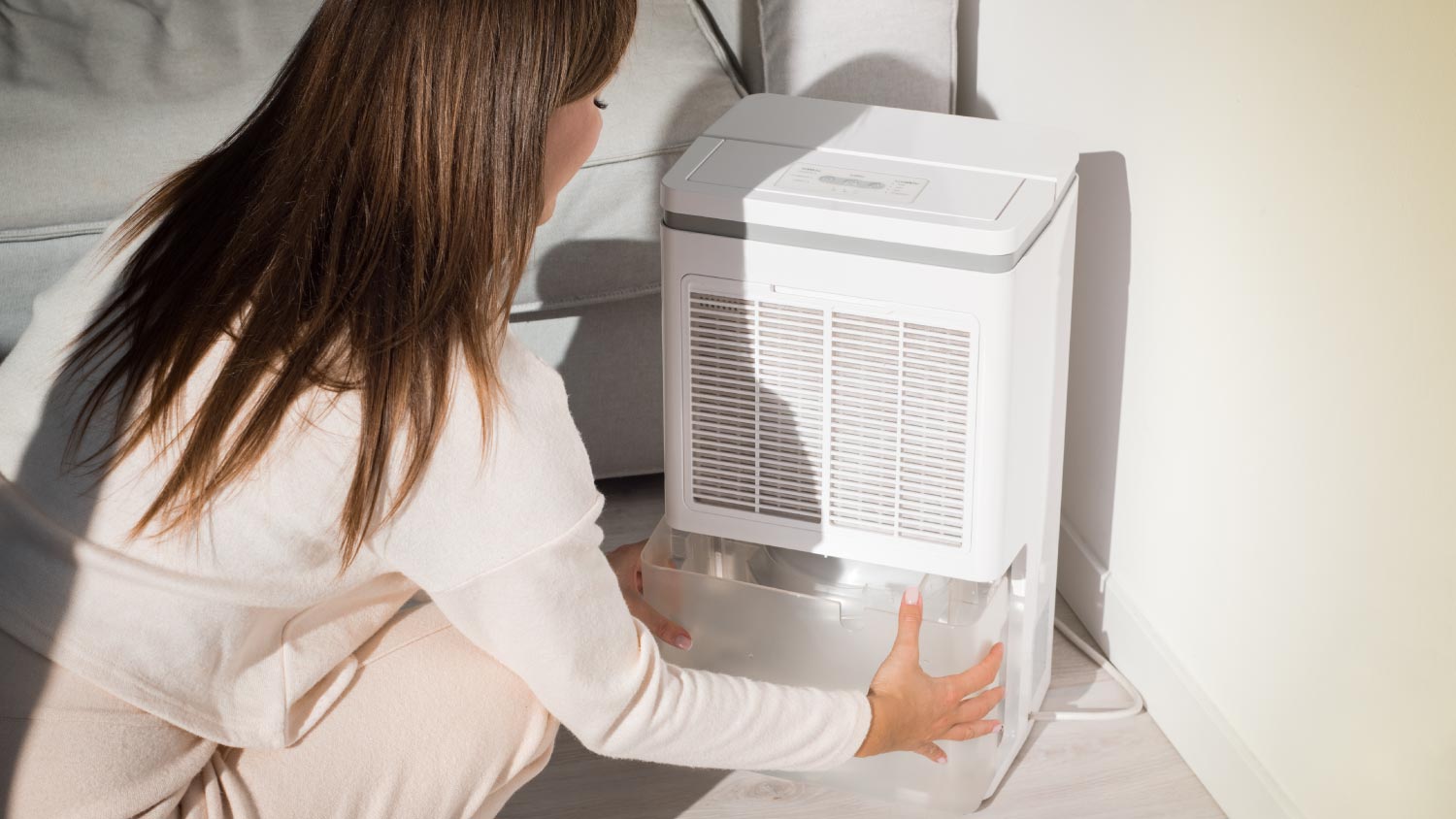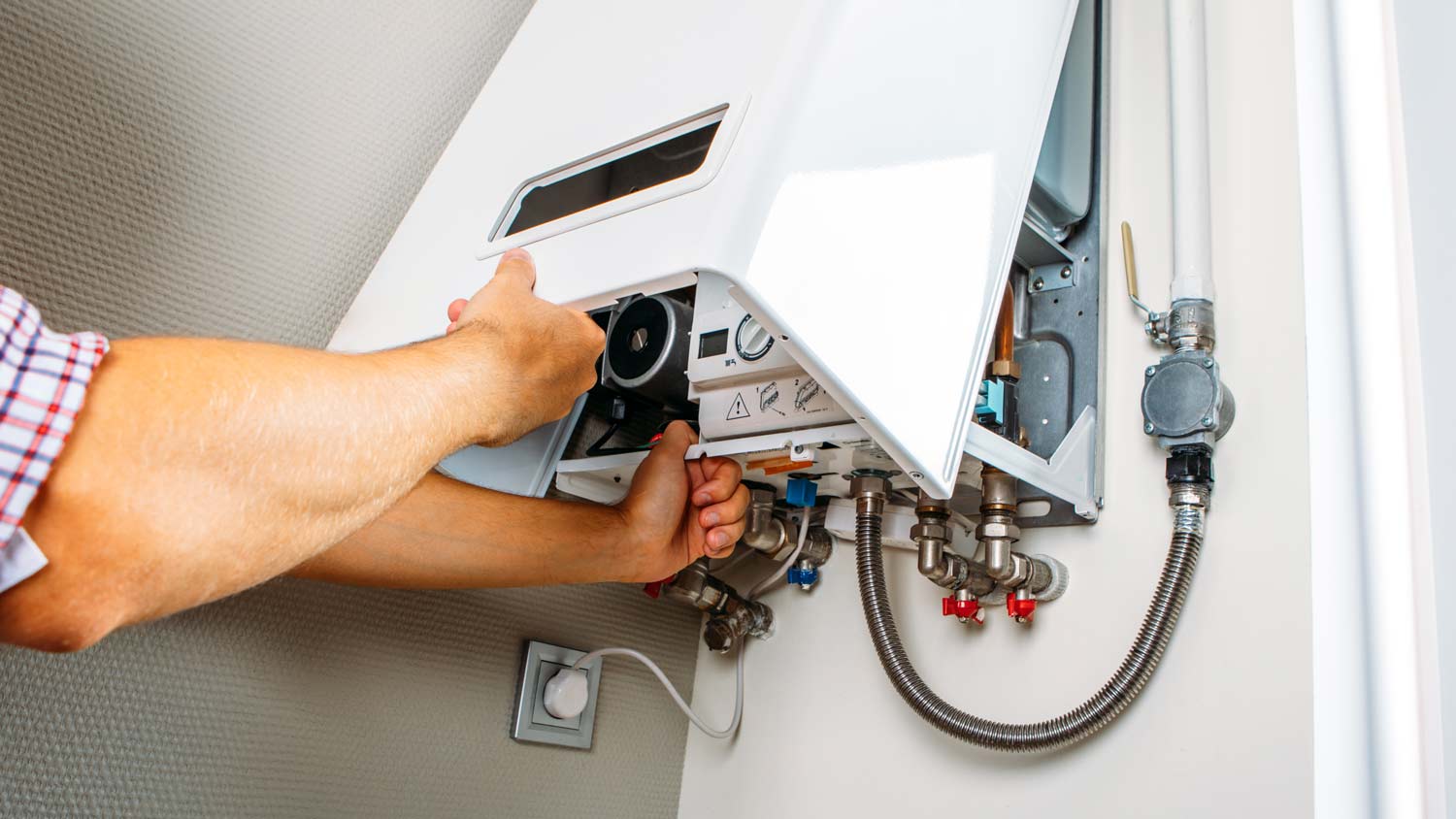
When your heat goes out, it can cause a bit of a panic. But knowledge is power, so let's go over radiator repair costs before that happens.
Consider getting a dehumidifier, and you won’t give spores a chance to score


Dehumidifiers pull excess moisture from the air to prevent mold growth.
A hygrometer helps homeowners monitor humidity and detect high moisture levels.
Dehumidifiers should be cleaned regularly to prevent mold from developing inside.
Whole-home systems offer stronger, more consistent humidity control, so consider hiring a professional installer to protect your entire home.
No one wants to share their home with icky black spots and unsightly green fuzz, but excess humidity acts as an open invite. By controlling the humidity levels in your home, dehumidifiers make the offer of mold null and void. Here’s how a dehumidifier can help banish mold and mildew from your home for good.
Mold thrives in moist conditions, so it is prevalent in bathrooms, basements, or other areas where moisture is likely to accumulate. Anywhere that has a water source, is confined, or has leaks and cracks is also susceptible to mold infestation.
Once mold appears, patches can quickly multiply. Spores can also travel through the air, attaching themselves to unaffected areas and spreading even further.
In addition to the “ick” factor, mold and its spores can worsen allergies and cause health problems in some people, according to the Mayo Clinic. These include ear, nose, and throat irritations such as sneezing, coughing, wheezing, and stuffiness. Mold may also make you more susceptible to viruses and other illnesses, so keeping it out of your home is important.

Your home’s relative humidity, which is humidity in the air that is present versus what could be present, needs to remain at or below 45 to 50% to inhibit mold growth. Dehumidifiers monitor and control moisture levels, preventing the conditions that those pesky spores love. Especially if you live in a naturally humid location, they can be your go-to for maintaining a mold-free house.
Start by checking your home’s humidity with a hygrometer. You can also look for signs of humidity, such as moisture and condensation. If the moisture in your home seems excessive, consider investing in the cost of a whole-home dehumidifier. A few smaller ones may help control the situation, but not as effectively as a system would in most cases. Your best bet is to contact an HVAC technician near you to install a whole-home dehumidifier.
"High humidity in your home creates an ideal environment for mold and bacteria to thrive, increasing the risk of respiratory issues and illnesses spreading among family members. It can also lead to structural damage, such as warped wood and peeling paint, while making the air feel sticky and uncomfortable. Managing humidity levels with proper ventilation and dehumidification helps protect your home and supports a healthier living environment."
—Ryan Osterkamp, Owner of Quality Comfort, Cincinnati, OH
Mold thrives in environments with excessive moisture and because dehumidifiers effectively reduce moisture levels, they can combat mold growth. Humid environments with humidity levels higher than 60% are conducive to mold growth. Dehumidifiers strive to reach optimal humidity levels between 30% and 50% to stop mold before it grows.
Dehumidifiers draw in damp air, remove the moisture, and release drier air back into the room. This process significantly reduces the risk of mold growth on walls, ceilings, and other surfaces in the room. While dehumidifiers are effective at mold prevention, they can't eliminate existing mold or prevent growth if there's a persistent moisture source.
Dehumidifiers effectively prevent mold and improve overall indoor air quality. Below are some major benefits you can enjoy by using dehumidifiers in your home.
Reduce indoor humidity levels, making it harder for mold spores to thrive.
Prevent mold growth in damp areas like basements, bathrooms, and kitchens.
Help avoid health risks associated with mold, such as allergies, respiratory issues, and skin irritation.
Alleviate allergy and asthma symptoms by reducing moisture that promotes dust mites, pet dander, and other allergens.
Eliminate musty odors caused by mold, mildew, and dampness, leading to fresher indoor air.
Protect furniture, wood, and electronics from damage due to excess moisture, like warping or corrosion.
Create a more comfortable and healthier living environment, particularly in areas with high humidity.
Unfortunately, once mold and mildew have already begun to grow in your home, a dehumidifier won’t be able to intervene. The most it can do is prevent spores from spreading or keep them from forming in the first place.
Don’t worry, though—you’re not always stuck replacing anything that’s mold-ridden, unless it’s your insulation or other porous materials. If it’s a small section, locate the source of the moisture, don protective gear like an N95 mask, gloves, and goggles, and follow our steps to remove mold. Note that bleach won’t kill mold spores; it will only whiten them until they inevitably grow back. Instead, opt for a borax solution in hot water.
For areas larger than 10 square feet or you suspect it’s black mold, it’s important to enlist the help of a local mold remediation specialist. They will help you salvage what you can, remove the existing mold, and determine how to prevent it from rearing its ugly head again in the future.
Mold and mildew are common issues, but that doesn’t mean you’re powerless in stopping them. Along with adding a dehumidifier, you can control humidity in your home and address moisture problems before they get worse. Here are the best methods to do it.
Proper insulation works to keep your home mold-free. Damaged insulation contributes to spore growth, so it’s important to inspect regularly and replace it when you spot signs of damage. Condensation on windows and wet spots on the walls, usually means it’s time for insulation replacement.
Inspect your home's exterior for mold-welcoming conditions. Repair roof leaks, remove rotting wood, and double-check AC units to ensure they’re working properly. Always remain on the lookout, especially after any stormy weather or flooding in your area.
Running your air conditioner can do more than keep you cool—it dehumidifies the air as it brings temperatures down. Especially during those hot, muggy days, run your AC as much as possible to prevent mold from moving in. Be sure to keep up with maintenance, too, as common problems such as broken pumps and blockages can lead to standing water.
Standing water is mold’s BFF, so be sure to avoid it around your home. Drain your kitchen sink as soon as you finish washing dishes and, if you take baths, don’t forget to pull out the stopper when you climb out. If your sink, bathtub, or washing machine has a blockage that hinders quick water drainage, remove the clog ASAP. In addition, don’t wait to fix any plumbing problems, and hire a local plumber for anything you can’t handle on your own.
From average costs to expert advice, get all the answers you need to get your job done.

When your heat goes out, it can cause a bit of a panic. But knowledge is power, so let's go over radiator repair costs before that happens.

Exposed ductwork can be a smart choice even beyond aesthetics. Fortunately, exposed ductwork costs are relatively low, and easy access keeps repair costs to a minimum.

Find out the average humidifier repair cost, what impacts pricing, and how to save. Get expert tips to budget for your humidifier repair.

Learn how to add Freon to your AC unit with our step-by-step guide, and keep your home cool with a properly functioning AC unit.

If you’re having issues with your heating and cooling system, it’s probably time to discuss these heat pump questions with your HVAC pro.

If you need to repair a gas boiler or radiator heating system, you should first talk to a pro. Here are the top radiator repair questions you should ask.